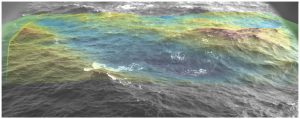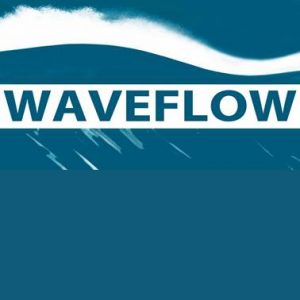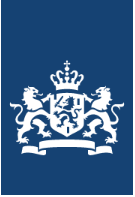LARGEST WAVES IN MARINE ENVIRONMENT: NEW PRODUCTS FOR WAVE MODEL FORECAST
PI and organization: A. Benetazzo (CNR/ISMAR)
Co-Is: L. Cavaleri, M. Sclavo, F. Barbariol, L. Bertotti, P. Pezzutto (CNR/ISMAR)
Reliable prediction of oceanic waves during severe marine storms has always been foremost for offshore platform design, coastal activities, and navigation safety. Indeed, many damaging accidents and casualties during storms were ascribed to the impact with abnormal and unexpected waves. However, predicting extreme waves is a challenging task. At first because of their inherent randomness, at second because of the difficulty of defining a comprehensive theoretical framework suited to explain their behaviour, and finally because the observation of such waves, a task of primary importance to assess theoretical and numerical models, must face costs and risks of deployment during severe conditions. Notwithstanding, developments of the state-of-the-art spectral wave models (WAVEWATCH III®, ECWAM, WAM, and SWAN) demonstrated that using the directional wave spectrum moments in statistical theories for wave extremes, it is nowadays possible to give a reliable estimate of the shape and probability of maximum waves during storms.
In the CMEMS service evolution project LATEMAR (LArgesT wavEs in MARine environment: new products for wave model forecast) the ISMAR-CNR team investigated the use of WAVEWATCH III and WAM fed with common routines designed to evaluate the extreme wave distribution functions for each sea state. Formulations rely on second-order nonlinear theories for crest height (Tayfun and Forristall models) and on the quasi-determinism theory for wave height (Naess model), which were implemented and used in their temporal and spatio-temporal forms (after Fedele, 2012, and Benetazzo et al., 2017).
LATEMAR was organized in three Work Packages. WP1: Development of software for wave maxima in WAM; WP2: WAM and WAVEWATCH III extreme wave validation and metrics; WP3: model-model intercomparison and sensitivity assessment. Main results of LATEMAR are the following:
- The implementation in WAM of a new routine (WAMAX) for maximum wave computation.
- The making of a thorough assessment of WAVEWATCH III and WAM outputs using field observations (Adriatic Sea and North Sea) of maximum waves.
- The comparison between maximum wave estimates from WAVEWATCH III (set up with ST3, ST4, and ST6 input/dissipation source terms) and WAM (MyWave version updated to Bidlot, 2012, as in the ECWAM model).
- The investigation of the sensitivity of maximum waves on sea state characteristics.
Finally, model capabilities were examined and extreme waves characterized during storms in the Mediterranean Sea. In particular, we aimed at disentangling the principal spectral moments and derived bulk parameters (such as steepness and bandwidth) that may point to favourable conditions for the generation of extreme waves.
The performance of the WAM and WAVEWATCH III models in estimating large wave parameters was assessed by verifying the model results against field observations, during specific test cases in the Adriatic Sea and North Sea. Ad-hoc wave data for validation was collected during LATEMAR. Among these, the stereo wave imaging system offered the most accurate and comprehensive measurement of individual maximum waves, as it allows an accurate 3D (2D space + time) reconstruction of the sea surface wave field (Benetazzo et al., 2012).
All model developments and evaluations resulting from the LATEMAR project are suitable for regional and global CMEMS wave forecasting systems to expand their catalogue of ocean products.
Contact person: Alvise Benetazzo, ISMAR-CNR (alvise.benetazzo@cnr.it).
Figure 1. Example of extreme wave observed with the stereo wave imaging WASS from the Acqua Alta platform (Italy). The colour of the mesh superimposed to the camera image is proportional to the sea surface elevation (red for crests and blue for troughs).
Figure 2. Maximum wave heights in the Mediterranean Sea (period 2001-2010). 99th percentile of the expected value Hm of the maximum crest height modeled with WAM (left) and WAVEWATCH III (WW3) with ST4 source term (right).




